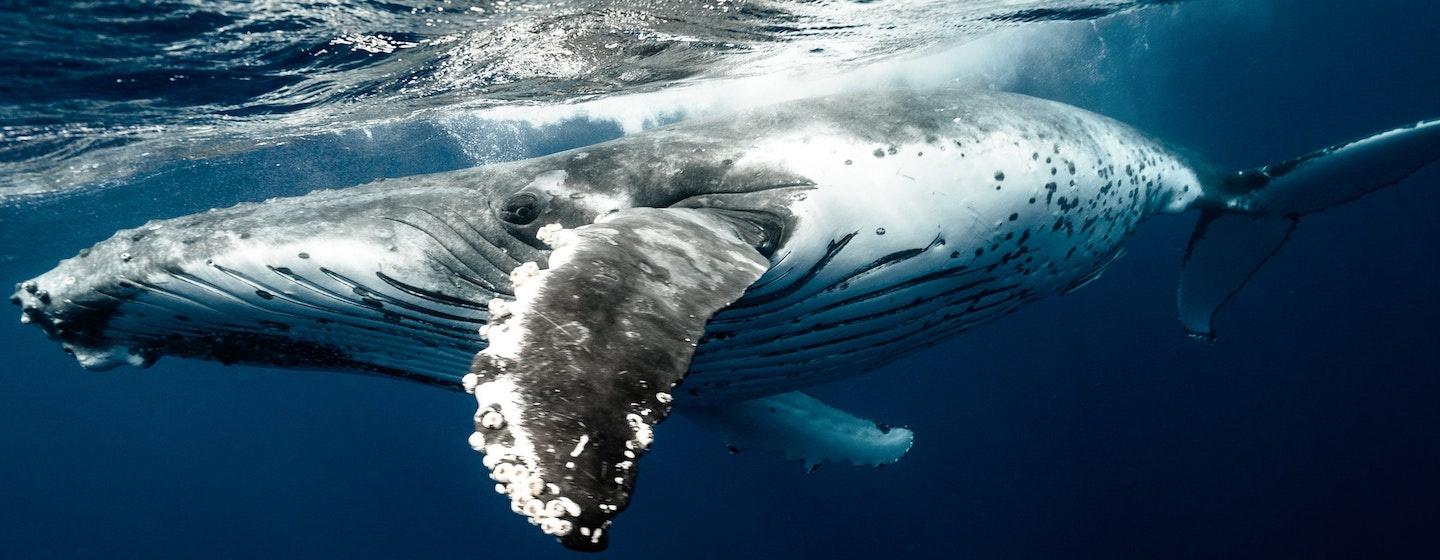Why Whale Poop Makes The Ocean A Better Place


Scientists at Duke and Stanford used drones and other high tech tracking devices to calculate for the first time just how much whales eat, and yes, just how much they leave behind. (well, poop.) It’s the first time those numbers have been added up. What’s even more fascinating, is how crucial whale poop is to the ocean’s health.
Side note here: Each whale poop is unique. Depending on the type of whale and its dinner, feces can be neon yellow to brick red; fleecy in texture to having the consistency of liquidy breadcrumbs.
Now to the whales generating all the poop.
Baleen whales include species such as the humpback whale, the fin whale, and the blue whale, which is the largest animal on Earth. Baleen whales aren’t easy to spot, they often forage beneath the surface; surfacing for only a brief time for air before diving beneath the waves to feed again.
Baleen whales feed on krill, which are small shrimplike creatures. When a baleen whale swims to gobble up a school of krill, its mouth can stretch to an enormous size. I’m talking about holding a volume of water larger than its body.
Baleen whales have baleen instead of teeth. You can think of baleen as a kind of giant whisker. It’s made of keratin, the same material that makes your fingernail. The baleen stretches between the upper and lower jaws and as the whale closes its mouth, baleen filters out the water but traps the krill.
But the problem for researchers who have been trying for years to determine how much whales eat is that all of that jaw stretching made it really difficult to calculate the amount of food consumption. Examining stomach contents of dead whales wasn’t very precise. Estimates based on studying what smaller whales eat wasn’t very accurate either.
Enter new technology. Drones can photograph feeding whales, measuring their size and revealing just how much those jaws can stretch. Sonar can measure the size of schools of krill. Tracking devices affixed to whales monitored where the whales traveled and how fast they moved.
Scientists measured the feeding rates of 321 different species of baleen whales in the Atlantic, Pacific and Southern oceans. Foraging behavior and prey consumption were calculated.
Crunching all of that data led researchers at Duke and Stanford to estimate whales eat three times more krill that previously thought. What’s even more interesting is that whales are not eating all of the time. In fact, whales fast for almost two thirds of the year, living off huge stores of blubber. But on the roughly 100 days when they do eat, whales really eat, wolfing down up to 30-percent of their body weight.
Millions of whales are estimated to have been killed by commercial whaling during the last century. Baleen whales were hunted to near extinction. You would think the population of krill would have exploded across the oceans as more and more whales were killed.
It didn’t happen. Scientists say the decline in whales has led to declines in the krill population.
“Fifty years after we stopped hunting whales, we’re still learning what impact the whaling industry had. The system is not the same,” said Matthew Savoca, a post-doctoral scholar at Stanford University’s Hopkins Marine Station, who was a lead author on the paper.
The reason? Whale poop. It turns out whales are a nutrient cycler.
“Whales eat a lot, but they aren’t eating that much every day. The animals go for months without a bite when migrating vast distances,” said Savoca. But the sheer volume of food that they consume, and then excrete, suggests that whales shape ocean ecosystems to a larger degree than previously thought.”
Here’s how. Whale poop is rich in iron, which is an important micronutrient for ocean creatures. Teeny marine plants called phytoplankton eat the iron, tiny krill eat the plants, and whales and fish eat the krill, which in turn produces yet more poop.
By feeding on iron-rich krill in the deep and returning some of that iron to the surface in the form of poop, whales preserved and cycled a crucial element in the food web.
You could say that iron-rich poop acted like manure on farm fields and gardens, fertilizing nutrition-poor ocean waters. It provided a base for the entire food chain that the rest of ocean depended on.
Excessive whaling might have broken this iron cycle. With less iron at the surface, everything crashes.
“It’s difficult for us to imagine just how productive our oceans were before industrial whale harvests disrupted them, and baleen whales were essential components of these prolific ecosystems,” said David Johnston, director of the Duke University Marine Robotics and Remote Sensing Lab.
Researchers say whales are likely not the only factor behind the staggering loss of krill but the evidence is clear that whales play a role. And rebuilding whale populations would go a long was towards restoring the health of the oceans.
The study was published in the November 4 issue of Nature.